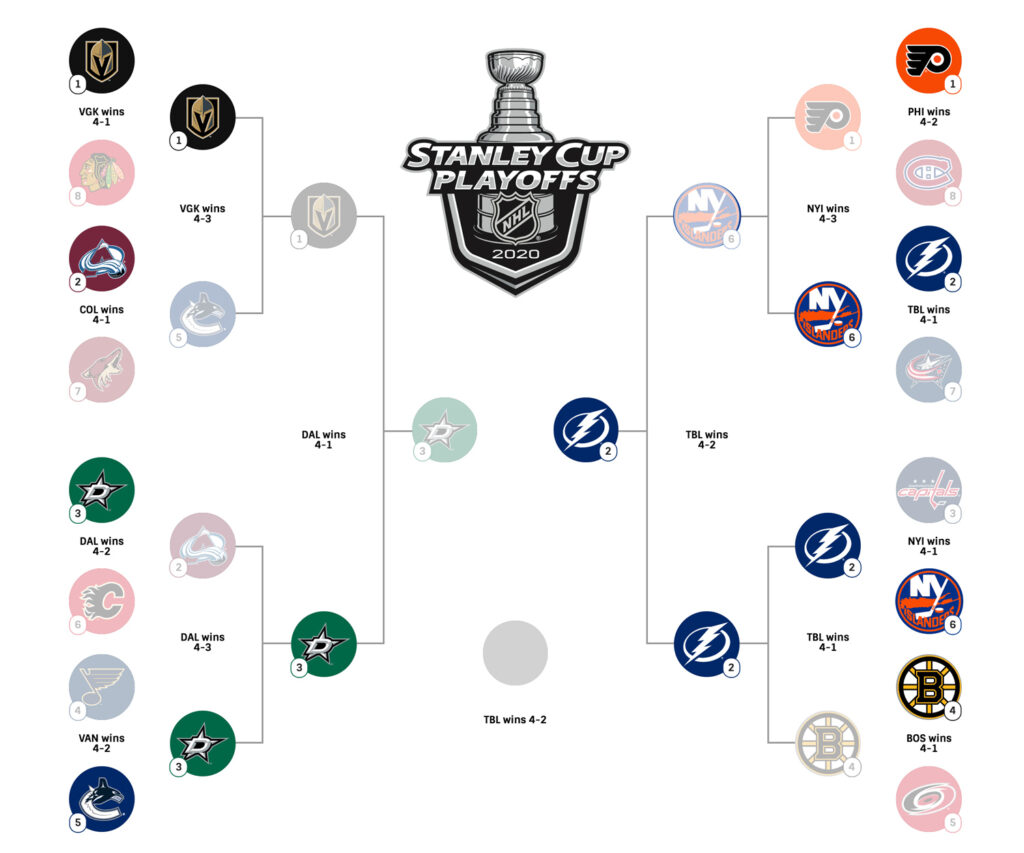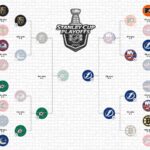The NHL had as little as 3 teams in the league and has grown to 32 as of the 2021-22 season.
As the league expanded, so has the number of teams that make it in the playoffs.
The league has also tinkered with playoff format using overall rankings, changing divisional structure, and including first-round byes.
But one thing that’s been stable for 40+ years now is the number of teams that qualify to make the playoffs.
How many NHL teams make the playoffs?
There are 16 NHL teams that make the playoffs each season since 1979-80. Eight teams from each conference qualify with a guaranteed minimum of 3 teams from each division. Both conference reserves the last two playoff spots for the wild card teams.
Teams are ranked based on their winning record reflected by the total team points earned.
Therefore, the top 3 teams in each division represent the highest point-getters amongst all the divisional rivals.
The wild card spots can be the most interesting teams to qualify in the playoffs.
While most would think as these teams are the bottom scrapers to fill the 16-team playoff quota, they may be stronger than some top-3 divisional qualifiers.
How is that possible?
Imagine you have an extremely strong Central division and a weaker Pacific Division from the Western Conference.
It’s possible to have 5 teams in Central finish with a better record than some or all of the 3 Pacific teams.
And since the top 3 teams of each division are guaranteed a playoff spot, that means that one of the wild cards is slated to play the 1st place Pacific team.
If the Central division teams were that strong, that wild card team (from Central) could have finished with more points than the 1st place Pacific team.
Typically, the divisions are well balanced, and this occurrence is rare, if not likely.
However, in the end, it can happen.
The same thing applies to league-wide standings. You’ll see teams with better records be excluded from the playoffs, while weaker teams qualify.
If you look back at the 2018-19 NHL Season, you’ll see that the Montreal Canadiens missed the playoffs even though they ranked 14th overall in the standings.

That year, the Eastern conference had a stronger class of teams compared to the Western conference.
So, although the Dallas Stars, Vegas Golden Knights and Colorado Avalanche had less points overall, they still finished amongst the top 8 teams in the Western conference.
If you’d like a more in-depth look at how the NHL playoffs work, make sure to check out my blog post here.
When did the NHL change to the 16-team playoff format?
The NHL first introduced the 16-team playoff format in the 1979-80 season. Following the merger of the WHA franchises in 1979, the league increased its team count to 21.
Back then, playoff qualifications were differently structured.
With the league made up of four divisions, the top team in each division were guaranteed a playoff spot.
The top 12 of the remaining 17 teams, based on regular season points, clinched the outstanding playoff spots.
The 16 playoff teams were pooled together and ranked from #1 to #16.
That year, the Eastern conference had a stronger class of teams compared to the Western conference.
So, although the Dallas Stars, Vegas Golden Knights and Colorado Avalanche had less points overall, they still finished amongst the top 8 teams in the Western conference.
If you’d like a more in-depth look at how the NHL playoffs work, make sure to check out my blog post here.
When did the NHL change to the 16-team playoff format?
The NHL first introduced the 16-team playoff format in the 1979-80 season. Following the merger of the WHA franchises in 1979, the league increased its team count to 21.
Back then, playoff qualifications were differently structured.
With the league made up of four divisions, the top team in each division were guaranteed a playoff spot.
The top 12 of the remaining 17 teams, based on regular season points, clinched the outstanding playoff spots.
The 16 playoff teams were pooled together and ranked from #1 to #16.
1979-80 NHL Quarter Finals
Playoff Format
Team #1 played Team #16
Team #2 played Team #15
Team #3 played Team #14
Team #4 played Team #13
Team #5 played Team #12
Team #6 played Team #11
Team #7 played Team #10
Team #8 played Team #9
The first round was a best-of-five series.
Every other round was a best-of-seven. And in each successive round, the teams were pooled together again based on their regular-season rankings.
Throughout the years, we’ve seen the first-round change to a best-of-seven series, playoff draws changed from divisional-based to conference-based and we even witnessed, at some point, each conference broken up into 3 divisions.
It wasn’t until the 2013-14 season that we adopted the wild card format to the playoff picture.
This was the same year where the league re-established four divisions in the standings.
These divisions are known as the Metropolitan, Atlantic, Central and Pacific relative to the locations of the teams on the North American map.
As of the 2021-22 season, each division will consist of 8 teams with the addition of the Seattle Kraken (32 total).
With the Kraken being added to the Pacific division, the Arizona Coyotes are set to relocate to Central division.
Noteworthy NHL Playoff Formats before 1979-80
There are two famous eras in the NHL history known as the Original Six and Expansion Eras.
Since there were significantly less teams back then, it was impossible to incorporate 16 teams in the playoff picture. So, what did the NHL do back then?
Original Six Era
As the name implies, there were only 6 teams in the NHL between the 1942-1967.
At the time, only 4 of the 6 teams would qualify for the playoffs. What many people might not be familiar with is that Team #1 played Team #3 and #Team 2 played #Team 4 in the opening round (semi-finals).
This format went on for the entire Original Six Era duration (source).
Expansion Era
In the 1967-68 season, the league doubled in size from 6-12 teams. With the league also split into two divisions, 4 teams would qualify on each side.
As a result, this was the first time the NHL had a quarter final added to the playoff format.
By 1974-75, the league expanded further to 18 teams. A total of 12 teams earned a spot in the playoffs, with the top division winners each receiving a bye in the first round.
In other words, teams ranked 5-12 met each other in the quarter finals and the winner of each round would meet with a divisional winner (source).
The quarter finals were a best-of-three series. The remainder was all best-of-seven.






